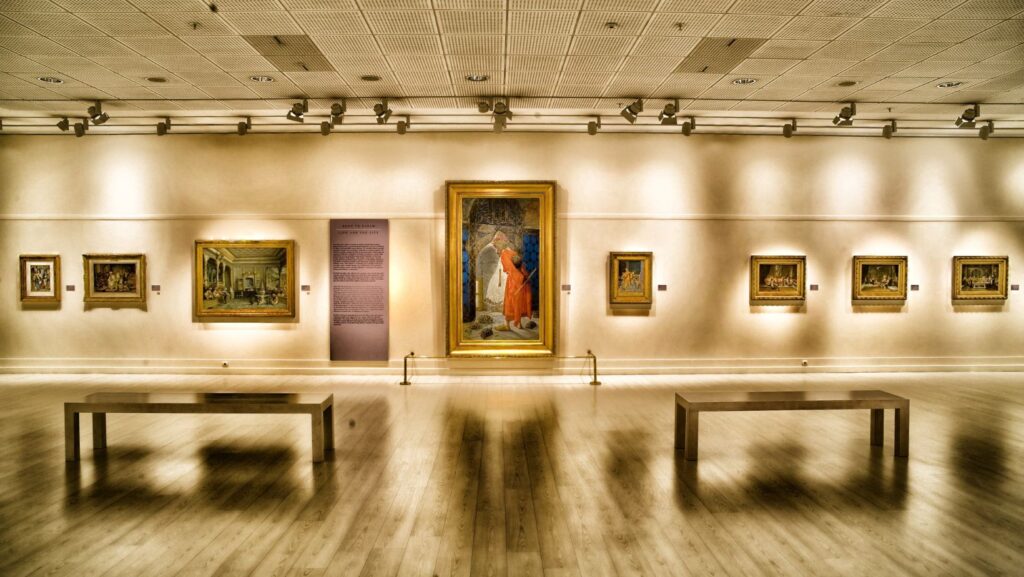The Art World Galleries
In the vibrant tapestry of the art world, galleries stand as the gateways to creativity and innovation. These spaces, often nestled in bustling  urban centers or tucked away in quaint towns, serve as the heartbeat of artistic expression. They offer a platform where emerging talents and established maestros alike showcase their visions, inviting viewers to embark on journeys of visual exploration.
urban centers or tucked away in quaint towns, serve as the heartbeat of artistic expression. They offer a platform where emerging talents and established maestros alike showcase their visions, inviting viewers to embark on journeys of visual exploration.
Art galleries aren’t just about displaying paintings and sculptures; they’re dynamic hubs where ideas are exchanged and cultural narratives are woven. Each gallery, with its unique curation, reflects distinct perspectives and stories. As visitors stroll through these curated spaces, they engage in a dialogue with the art, discovering new interpretations and insights.
For art enthusiasts and collectors, galleries are more than just viewing spaces; they’re treasure troves of inspiration and potential investments. By bridging the gap between artists and audiences, galleries play a pivotal role in shaping the ever-evolving landscape of the art world.
The Evolution Of The Art World Galleries
Art world galleries have undergone significant transformation over the years. Initially, galleries functioned primarily as exhibition spaces, hosting works by local artists. With globalization and technological advances, galleries expanded their reach, showcasing diverse art forms and international talents.
Digital technology further reshaped galleries’ roles. Virtual tours and online exhibitions emerged, making art accessible to global audiences. Blockchain technology introduced digital art and NFTs, broadening the scope of exhibitions.
Contemporary galleries now play multifaceted roles beyond exhibitions. They focus on artist collaboration, curatorial innovation, and community engagement. By hosting workshops, lectures, and interactive events, galleries foster inclusive cultural participation.
Market dynamics also influenced gallery evolution. Economic shifts and trends in art investment prompted galleries to adopt flexible business models. Enhanced strategic partnerships and collaborations with museums, auction houses, and private collectors characterized this evolution.
In this ever-changing landscape, art galleries remain essential platforms that adapt and thrive, reflecting and contributing to global cultural narratives.
Key Players In The Art World
Key players in the art world contribute significantly to its vibrancy and growth. They range from established institutions with rich histories to innovative new galleries redefining art spaces.
Prominent Galleries And Their Histories
Prominent galleries serve as pillars of the art community. The Louvre in Paris, renowned for its vast collection of masterpieces, dates back to the late 18th century and stands as a testament to art history’s enduring legacy. New York’s MoMA revolutionized modern art with its vast exhibitions and educational programs since its establishment in 1929. The Tate Modern in London has been influential in promoting contemporary art internationally since its opening in 2000. These galleries not only preserve art history but also shape current artistic movements.
Emerging Galleries Making A Mark
Emerging galleries inject new energy into the art world by showcasing groundbreaking works. Perrotin in Paris, established in the 1990s, supports avant-garde artists like Daniel Arsham and JR. Pace Gallery, with locations in several international cities, offers platforms for artists like Glenn Ligon and Adrian Ghenie, expanding their reach. Meanwhile, galleries like Seoul’s Hakgojae focus on fostering Korean art on a global stage. These galleries shape future art landscapes through innovation and diversity.
The Role Of Galleries In Art Trends
Galleries significantly impact art trends by shaping what becomes popular and celebrated. They serve as trendsetters, influencing artistic  movements and supporting emerging artists.
movements and supporting emerging artists.
Art galleries play a pivotal role in defining artistic movements. They organize exhibitions that present emerging styles to the public, highlighting innovative techniques and themes. By curating collections that align with or challenge current art trends, galleries drive the evolution of art. This can be seen in movements like Abstract Expressionism and Pop Art, where galleries were instrumental in bringing these styles to the forefront. Galleries often collaborate with artists to create thematic shows that explore societal issues, influencing both public perception and artistic direction.
Galleries are vital in promoting new talent within the art world. They provide platforms where emerging artists can gain visibility and recognition. By hosting solo and group exhibitions, galleries create opportunities for artists to showcase their work to potential collectors and critics. This support extends beyond physical spaces, with many galleries leveraging digital platforms to reach wider audiences. Through mentorship and representation, galleries help artists navigate the commercial aspects of the art world, fostering growth and ensuring diverse artistic voices are heard and appreciated.

